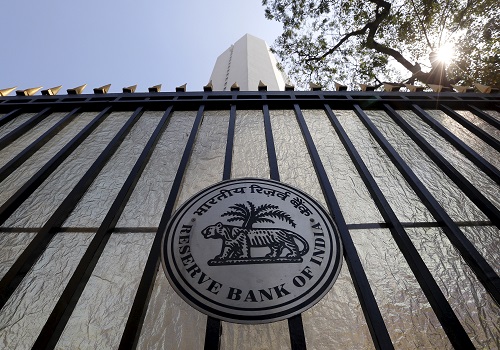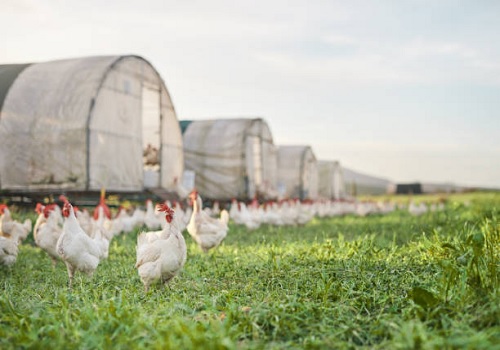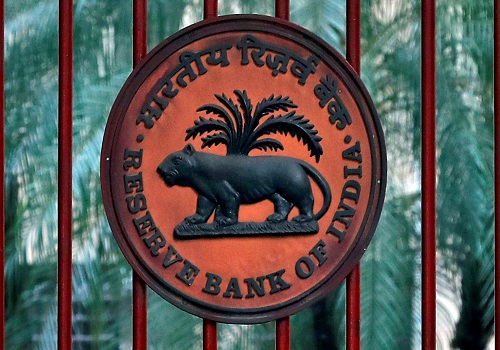Silver trading range for the day is 71280-72740 - Kedia Advisory

Follow us Now on Telegram ! Get daily 10 - 12 important updates on Business, Finance and Investment. Join our Telegram Channel
Gold
Gold faced a mild setback yesterday, closing down by -0.29% at 61996, attributed to a decline in US Treasury Yields preceding the release of December's inflation data. Investors shifted away from gold amidst expectations of a robust labor market and core inflation persisting above the 2% target, leading to reduced bets on Federal Reserve rate cuts starting in March. Anticipation for the inflation report is high, with consensus suggesting a monthly headline inflation growth of 0.2%, surpassing the 0.1% increase in November. Core CPI, excluding volatile food and oil prices, is expected to rise steadily by 0.3%. On an annual basis, headline inflation is forecasted to accelerate to 3.2%, up from 3.1% in November, while core inflation is projected to soften to 3.8%, down from the previous 4.0%. A report indicating persistent inflation may reduce the likelihood of Fed policymakers easing their restrictive stance, while moderate figures could fuel hopes for rate cuts from March. Technically, the market witnessed long liquidation, marked by a 3.74% drop in open interest to settle at 9870. Prices declined by -183 rupees. Gold's support is identified at 61840, and a breach could lead to a test of 61685 levels. On the upside, resistance is expected at 62275, and a move above this level may push prices towards 62555. The technical overview suggests a cautious market sentiment, balancing between potential support and resistance levels, with traders closely monitoring economic indicators and Fed policy signals for future trading decisions.
Trading Ideas:
* Gold trading range for the day is 61685-62555.
* Gold dropped as traders lightened commitments ahead of key US inflation data.
* Fed’s Bostic is biased towards a tight monetary policy stance until underlying inflation returns to 2%.
* The US headline and core inflation grew by 0.2% and 0.3% respectively in December.
Silver
Silver experienced a slight dip of -0.11%, closing at 71969, in anticipation of a crucial inflation report that may provide insights into potential interest rate cuts by the Federal Reserve in the coming year. A New York Federal Reserve report indicated consumer expectations of a decline in inflation, and Fed Governor Michelle Bowman, previously hawkish, reversed her stance by stating that U.S. monetary policy is now "sufficiently restrictive." The market currently anticipates a 66% chance of a rate cut at the Fed's March 19-20 policy meeting according to the CME FedWatch Tool. Luis de Guindos, from the European Central Bank (ECB), expressed concerns about a technical recession in the latter part of the previous year, coupled with a grim outlook for the near future. However, he noted that the rapid deceleration in inflation observed in 2023 is expected to pause in early 2024. Meanwhile, Silver's industrial demand is projected to grow by 8% to a record 632 million ounces this year, propelled by investments in photovoltaics, power grids, 5G networks, consumer electronics, and increased vehicle output. From a technical perspective, the market saw fresh selling, with a 6.74% increase in open interest to settle at 25753. Silver prices declined by -78 rupees. Support is identified at 71625, with a potential test of 71280 if breached. Resistance is expected at 72355, and a move above could lead to testing 72740. The technical overview suggests an active market, with traders closely monitoring economic indicators and central bank signals to gauge future price movements in the silver market.
Trading Ideas:
* Silver trading range for the day is 71280-72740.
* Silver prices have decreased in anticipation of an important inflation report
* Fed’s Bostic sees the first interest rate cut coming in the third quarter and two quarter-percent rate cuts in the final quarter of the year.
* Consensus expects monthly headline inflation to have grown at a higher pace of 0.2% and core CPI to rise steadily by 0.3%.
Crude Oil
Crude oil saw a notable uptick, settling up by 2.92% at 6034, primarily fueled by unexpected factors. The surge came in the wake of an unforeseen increase in U.S. crude inventories for the week ending January 5th, coupled with heightened geopolitical tensions and the shutdown of Libya's largest oilfield. These elements contributed to the positive momentum in oil prices. The U.S. Energy Information Administration (EIA) added to the market dynamics by releasing its 2024 forecast, projecting a potential shortage of 120,000 barrels per day, provided OPEC+ refrains from implementing additional production cuts. This increase in U.S. output contrasts with the OPEC and its allies' strategy of reducing their own production to boost oil prices. The EIA forecasted a rise in U.S. crude production by 290,000 barrels per day to reach a record 13.21 million bpd this year. Meanwhile, OPEC+ production (excluding Angola) is anticipated to decrease by 620,000 barrels per day to 36.44 million bpd next year, down from the pre-pandemic five-year average of 40.2 million bpd. Technically, the market exhibited short covering, with open interest remaining unchanged at 12212 and prices increasing by 171 rupees. Crude oil finds support at 5912, and a breach could lead to a test of 5790 levels. Resistance is identified at 6113, with a move above potentially pushing prices towards 6192. The technical overview suggests a nuanced market sentiment, influenced by both unexpected inventory data and geopolitical factors, with traders carefully monitoring support and resistance levels for potential trading opportunities.
Trading Ideas:
* Crudeoil trading range for the day is 5796-6180.
* Crude oil dropped after an unexpected increase in U.S. crude inventories
* US oil output to touch a record high in 2024, but growth will slow – EIA
* OPEC+ production is forecasted to decrease to 36.44 million barrels per day in 2022.
Natural gas
Natural gas experienced a substantial decline, settling down by -8.39% at 248.8, driven by profit booking after a recent rally prompted by forecasts of extremely cold weather next week. The anticipated frigid conditions are expected to drive demand to record highs, potentially causing a drop in production due to the freezing of oil and gas infrastructure. Meteorologists project a shift in U.S. weather to colder than normal from Jan. 13-22, followed by a return to warmer temperatures on Jan. 23-24. The U.S. Energy Information Administration (EIA) added to the market outlook by forecasting that natural gas production and demand, along with LNG exports, will reach record highs in 2024. Dry gas production is projected to rise to 105.04 billion cubic feet per day (bcfd) in 2024 and 106.38 bcfd in 2025 from a record 103.55 bcfd in 2023. Notably, China achieved a record-high gas production last year, driven by increased upstream exploitation and exploration by domestic companies seeking to ensure energy security. From a technical standpoint, the market witnessed long liquidation, with a significant drop in open interest by -48.43% to settle at 14519. Natural gas prices declined by -22.8 rupees. Support is identified at 240.2, with a potential test of 231.6 if breached. Resistance is expected at 264.4, and a move above could lead to testing 280. The technical overview underscores the impact of profit booking following the recent rally, with traders monitoring key support and resistance levels amid the dynamic factors influencing the natural gas market.
Trading Ideas:
* Naturalgas trading range for the day is 231.6-280.
* Natural gas dropped due to profit booking after a rally caused by forecasts of extremely cold weather.
* The extreme cold may lead to a drop in production due to freezing oil and gas infrastructure.
* US natgas output and demand to hit record highs again in 2024 – EIA
Copper
Copper prices exhibited a modest gain of 0.35%, settling at 716.4, primarily attributed to a decline in copper production in Chile. The South American nation reported a 3.1% YoY decrease in copper production in November, amounting to 444,905 tons. This follows a 4.4% YoY drop in October 2023, with production falling from 485,400 tons in October 2022 to around 464,300 tons. The oversupply scenario, particularly on the LME, has resulted in significant discounts against longer-dated contracts, offering an advantageous opportunity for Asian buyers to procure copper at a lower cost. This projection raises apprehensions about prolonged poverty and rising debt levels in many developing countries. Additionally, the World Bank anticipates China's economic growth to decelerate to 4.5% in 2024. The upcoming release of China's trade data on Friday is expected to provide insights into the demand prospects for copper, considering China is the world's largest metals consumer. In the technical realm, the market is undergoing short covering, with a 2.69% drop in open interest, settling at 6217. Despite this, copper prices have risen by 2.5 rupees. Support for copper is identified at 713.8, with a potential test of 711.1 levels if breached. On the upside, resistance is anticipated at 718.5, and a breakthrough could propel prices to test 720.5. The dynamics of open interest and price movement suggest a cautious optimism in the market, with traders closely monitoring these levels for potential trends in copper prices.
Trading Ideas:
* Copper trading range for the day is 711.1-720.5.
* Copper gains as copper production in Chile, slid by 3.1% YoY in November
* Oversupply of copper on the LME is causing record discounts against longer-dated contracts
* The World Bank warned that global growth in 2024 is set to slow for a third year in a row
Zinc
Zinc experienced a marginal decline of -0.27%, settling at 222.85, influenced by concerns over demand amid a gloomy economic outlook. The economic sentiment was further dampened by a decrease in the U.S. non-manufacturing purchasing managers' index and the service industry employment sub-indicator in December. China's refined zinc production in December 2023 recorded a noteworthy increase of 2.05% compared to the previous month, reaching 590,900 tons. However, the anticipation of a decline in domestic refined zinc production to 572,400 mt in January 2024 from December's 590,900 mt could potentially tighten the market's spot volume, providing support for SHFE zinc. The New York Fed's December survey indicated a significant drop in consumers' inflation expectations for 2024, falling to 3.01% from 33.6% in the previous month. This stance has cooled expectations for an imminent rate cut by the Federal Reserve, contributing to the overall economic uncertainty. From a technical perspective, the zinc market is currently witnessing fresh selling, with a 1.5% increase in open interest, settling at 2577. Despite this, zinc prices experienced a decline of -0.6 rupees. Support for zinc is identified at 221.8, with a potential test of 220.8 levels if breached. On the upside, resistance is expected at 224.2, and a breakthrough could lead to a testing of 225.6. Traders are closely monitoring these technical levels for potential trends in zinc prices amid the complex interplay of economic indicators and production dynamics.
Trading Ideas:
* Zinc trading range for the day is 220.8-225.6.
* Zinc prices dropped due to concerns about demand amid a gloomy economic outlook.
* China's refined zinc production increased by 2.05% compared to the previous month
* The global zinc market deficit eased in October compared to September, according to data from the ILZSG
Aluminium
Aluminium faced a decline of -0.39%, settling at 202.85, as traders evaluated the impact of global economic headwinds. The World Bank's warning of a third consecutive year of slowing global growth in 2024 has cast a shadow on the market, raising concerns about prolonged poverty and rising debt levels in developing countries. The additional forecast of China's economic growth slowing to 4.5% in 2024 added to the subdued sentiment, exacerbated by expectations of policy easing in China leading to a weaker yuan. China's domestic aluminium production exhibited growth, reaching approximately 3.6 million tons in December 2023, reflecting a 2.1% increase from the previous month and a 3.5% rise from the same period a year ago. The annual production estimate for 2023 stood at 41.5 million tons, representing a year-on-year growth of 3.6%. Despite a temporary decrease in aluminium output in November due to production cuts in Yunnan province during the dry season, December's production remained unaffected. Technically, the aluminium market is witnessing fresh selling, marked by a 1.11% increase in open interest, settling at 4290. Despite this, aluminium prices experienced a decline of -0.8 rupees. Support for aluminium is identified at 202.2, with a potential test of 201.5 levels if breached. On the upside, resistance is expected at 203.9, and a breakthrough could lead to a testing of 204.9. Traders are closely monitoring these technical levels, considering the complex interplay of global economic indicators, production dynamics, and policy developments impacting the aluminium market.
Trading Ideas:
* Aluminium trading range for the day is 201.5-204.9.
* Aluminium prices dropped as traders assessed global economic headwinds
* The World Bank forecasted China's economic growth to slow to 4.5% in 2024.
* Alcoa to curtail alumina production at Kwinana refinery
Cotton
Cotton prices, symbolically referred to as Cottoncandy, settled down by -0.14% at 55620, reflecting the impact of Brazil's historic high cotton production in the 2022-23 season. The increased cultivation and productivity in Brazil contributed to a surge in global cotton supply. However, sluggish demand, influenced by unfavorable economic conditions, resulted in bloated inventories and a decline in cotton prices worldwide. The Cotton Association of India (CAI) has maintained its pressing estimate for the 2023-24 season at 294.10 lakh bales of 170 kg each. Despite the rise in global supply, CAI emphasizes the impact of sluggish demand on inventories. CAI President Atul S Ganatra highlighted that total supply till the end of November was estimated at 92.05 lakh bales, consisting of market arrivals, imports, and opening stocks. This information underscores the existing challenges in balancing cotton supply and demand. Reports of a decline in pink bollworm infestation in the cotton crop bring a positive aspect to the market. The infestation has reduced from 30.62% during 2017-18 to 10.80% in 2022-23, contributing to better crop conditions. However, the market is still grappling with the aftermath of oversupply and weakened demand. Brazil's cotton shipments reaching 253.71 thousand tons in November, with a 12% increase compared to October 2023, indicate the country's significant role in the global cotton market. However, a 5.5% decrease compared to November 2022 suggests the challenges faced by the global cotton industry. The International Cotton Advisory Committee (ICAC) projects that global cotton production will surpass consumption for the second consecutive year. With an expected 3.25% year-on-year growth in cotton lint production to 25.4 million metric tons in the 2023-2024 season, consumption is forecasted to marginally decline to 23.4 million metric tons. From a technical standpoint, the market is witnessing long liquidation, marked by a 0.5% drop in open interest to settle at 199. Cottoncandy is finding support at 55520, with a potential test of 55430 on the downside. Resistance is anticipated at 55700, and a breakthrough could lead to further testing at 55790.
Trading Ideas:
* Cottoncandy trading range for the day is 55430-55790.
* Cotton dropped as Brazil hits record cotton production in 2022-23
* Global cotton production expected to outpace consumption for second year in a row.
* Pink bollworm infestation in cotton crop has declined.
* In Rajkot, a major spot market, the price ended at 26411.1 Rupees dropped by -0.09 percent.
Turmeric
Turmeric prices experienced a decline of -1.08%, settling at 13198, driven by slower buying activities in anticipation of stock releases ahead of the new crop in January 2024. Pressure on prices also stems from improved crop conditions due to favorable weather. However, the downside is expected to be limited as concerns arise over potential yield losses due to the crop's unfavorable weather conditions. Additionally, support is evident from improved export opportunities. The Turmeric Board established by Prime Minister Modi in Telangana has sparked concerns among farmers in Maharashtra regarding the headquarters' location. Despite these concerns, the overall crop condition is reported as satisfactory, with harvest readiness anticipated from January to March. The demand for turmeric has witnessed an uptick in both developed and emerging nations, leading to a 25% increase in exports during Apr-Oct 2023 compared to the same period in 2022. In October 2023, turmeric exports recorded a gain of 11.58%, totaling 10,137.78 tonnes compared to 9,085.81 tonnes in September 2023. Expectations for a 20–25% decline in turmeric seeding, particularly in areas like Maharashtra, Tamil Nadu, Andhra Pradesh, and Telangana, have been driven by farmers' shifting priorities. In the major spot market of Nizamabad, the Turmeric price concluded at 12919.3 Rupees, marking a gain of 0.47%. From a technical perspective, the market is under fresh selling, with a 0.13% increase in open interest to settle at 11795. Turmeric is finding support at 13090, with a potential test of 12982 on the downside. Resistance is anticipated at 13326, and a breakthrough could lead to further testing at 13454.
Trading Ideas:
* Turmeric trading range for the day is 12982-13454.
* Turmeric dropped as buying activities has been slower.
* Pressure also seen amid improved crop condition due to favorable weather condition.
* However, downside seen limited due to the potential for yield losses caused by the crop's unfavourable weather.
* In Nizamabad, a major spot market, the price ended at 12919.3 Rupees gained by 0.47 percent.
Jeera
Jeera prices faced a decline of -0.88%, settling at 26580, primarily driven by higher production prospects in Gujarat and Rajasthan. The aggressive sowing for Jeera in Gujarat, along with sluggish exports, is expected to exert continued pressure on prices in the near term. Sowing activities in the region have progressed smoothly due to favorable weather conditions, resulting in a significant increase in the sown area for cumin. In Gujarat, Jeera sowing has witnessed robust growth, surging by nearly 102% to 544,099.00 hectares compared to 268,775.00 hectares in the same period of 2022. Additionally, there has been a 13% increase in the cumin area in Rajasthan, reaching 6.32 lakh hectares. Global demand for Indian jeera has declined, as buyers prefer alternative sources like Syria and Turkey due to the comparatively higher prices of Jeera in India. Export prospects remain subdued in the upcoming months due to seasonality, and the price competitiveness of Indian jeera in the global market is not currently favorable for exporters. This scenario is expected to keep export activity muted in the coming weeks. In October 2023, 6,228.01 tonnes of jeera were exported, down by 13.39% from September 2023 and a substantial decline of 46.77% compared to October 2022. From a technical perspective, the market is under fresh selling, with a 0.64% increase in open interest to settle at 1881. Jeera is finding support at 26080, with a potential test of 25590 on the downside. Resistance is anticipated at 27080, and a breakthrough could lead to further testing at 27590.
Trading Ideas:
* Jeera trading range for the day is 25590-27590.
* Jeera prices dropped due to higher production prospects
* In Gujarat, Cumin sowing witnessed very strong growth by nearly 103% with 530,030.00 hectares against sown area of 2022
* Stockists are showing interest in buying on recent downfall in prices triggering short covering.
* In Unjha, a major spot market, the price ended at 31377.45 Rupees dropped by -0.62 percent.
Views express by all participants are for information & academic purpose only. Kindly read disclaimer before referring below views. Click Here For Disclaimer












 320-x-100_uti_gold.jpg" alt="Advertisement">
320-x-100_uti_gold.jpg" alt="Advertisement">








